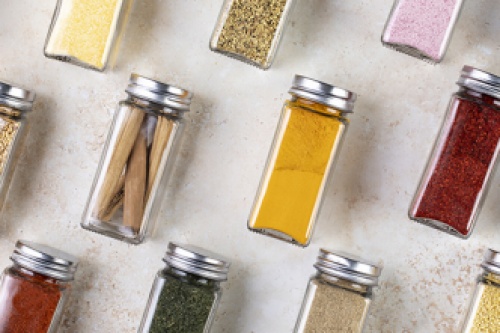Indian cuisine has used spices and herbs for thousands of years as a quick and inexpensive way to flavor any dish. Without our custom spice blends, we just could not conceive making Indian food. When we discuss Indian food, the first thing that springs to mind is spices.
The variety of Indian food gives each spice rack its own distinctive flavor. For instance, mustard seeds, which may not be a necessary spice in a north Indian home, are found in the spice rack of the typical southern household. The ‘perfect’ spice cabinet will be unique to individual tastes, but here are 7 fundamental herbs and spices that are common across India. Custom spice blend manufacturers also use these as the base for their blends.
Black peppercorns.
Everyone is familiar with the spice pepper. For the best flavor, this aromatic and slightly pungent spice should be freshly ground. To get the greatest flavor and heat, choose to buy whole peppercorns and grind them yourself using a pepper mill whenever possible.
Turmeric Powder
This is the most trending spice because of its role as an anti-inflammatory agent, but it is also an antiseptic and antibacterial. Bright yellow spice powder known as turmeric powder is created by drying and grinding turmeric rhizomes. It has a somewhat peppery and warm flavor, and adds a brilliant color to dishes. The presence of "curcumin" also makes it
suitable for cosmetic and therapeutic uses.
Chili powder
Indian chili powder is ground-up dried chillies mostly of the cayenne variety but can vary quite a bit with the region. It ranges from Kashmiri chili powder, which adds a brilliant red color to foods, to Bird's eye chili powder, which has a significantly hotter taste profile.
Coriander Powder
A plant known as cilantro is the source of coriander. The plant's seeds are ground into powder to make coriander. It is a major component of spice blends and frequently used in both northern and southern Indian cuisine. The tastes are intensified by toasting the seed. This cultivar is frequently used to create the distinctive curry flavor seen in Indian curries. Lemon and sage blend with a sweet undertone to create the flavor of coriander. It has cooling properties.
Cumin Seeds
Whole and ground cumin differ from one another and cannot be used interchangeably. Despite being the same substance, after processing or grinding it, the flavor profile changes significantly. It is a common item in Indian cooking and is frequently included in spice blends.
Green Cardamom
Green cardamom is another food supplement used for centuries in cooking and as a medicine. Cardamom is an aromatic seed pod that provides a distinct aroma and a sweet flavor. Moreover, this spice stands for many health benefits and healing qualities. It is a good source of antioxidants that help cure cough and cold. Cardamom seeds used with tea provide an effective remedy for treating the flu.
Garam Masala
Garam masala is a spice blend extensively used in Indian cuisine, from curries and lentil meals to soups. To release their fragrant qualities, whole spices like cinnamon, mace, peppercorns, coriander seeds, cumin seeds, and cardamon pods are toasted in a skillet before being processed to a powder.
Conclusion
Owing to the high demand for Indian whole spices and blends, you can find many Indian spice blend manufacturers and exporters over the internet. But only some of them stand to the quality they promise. VLC Spice Manufacturers are renowned Indian exporters who never compromise on the quality of their products. They are also custom spice blend manufacturers and provide solutions for white labeling and can supply spices in various types of packaging, per their customers' unique demand.
So put in an order today and relish the authenticity of Indian spices both whole and blended!















